How to replant indoor plants correctly and when, choosing a substrate and pot
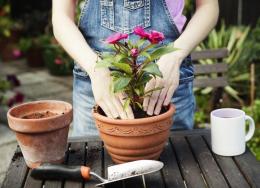
Timely replanting is rightly considered the key to growing a beautiful and healthy flower.
In addition, knowing how to properly replant indoor plants for the benefit of their further growth and development is considered an important nuance.
Content:
- How to properly replant indoor plants: preparation for work
- How to choose a pot and soil
- In what month should you replant indoor flowers?
- What are the advantages of replanting indoor plants in autumn and spring?
- Is it possible to replant indoor flowers in winter and summer?
- Replanting indoor plants according to the lunar calendar
- What is transshipment
- How to replant a large flower
- Most common mistakes
How to properly replant indoor plants: preparation for work
Before you start replanting a flower you need to prepare it. So, a day before the event, it is recommended to moisten the soil, and immediately on the day of replanting, carefully remove the earthen lump from the old pot.
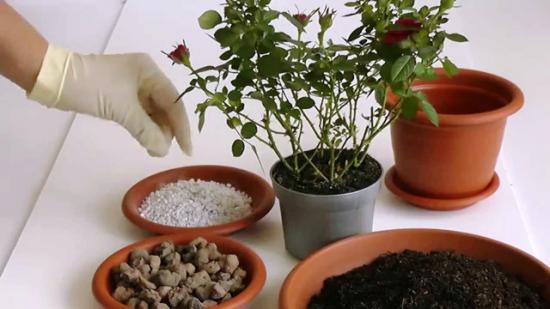
At this time it is necessary to remove old drainage and, where possible, old soil. To improve the health of the flower, you need to carefully examine the root and, before placing it in a new place of residence, cut out the rotten parts, sprinkling the cut areas with charcoal.
In addition to preparing the plant itself, it is important to devote time and capacity.So the pots must be treated; for this you can use boiling water, a weak solution of potassium or superphosphate. This will help remove any remaining lime on the sides of the pot and improve its porosity.
It is also important to pay attention to treating the walls against diseases and pests. A soap solution or 2% copper sulfate solution is suitable for this.
All tools must be disinfected and even the soil is recommended to be heat treated. Observing this caution will not only help preserve the flower, but also improve its condition.
Let's watch a video on how to properly replant indoor plants:
How to choose a pot and soil
At choosing a new container It is important to take into account that in size it should exceed the previous one by 2-3 cm if a young plant is being transplanted and by 3-5 cm if an old one is being transplanted. Under no circumstances should you suddenly switch from a small pot to a huge one, this can be dangerous.
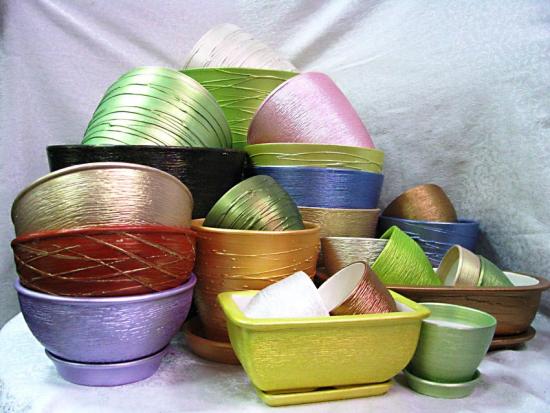
When choosing soil, there are also a number of features that you need to pay attention to.
So, depending on the needs of the species, it is recommended to pay attention to indicators such as:
- Nutritional composition;
- Level of looseness and lightness, providing aeration;
- Acidity.
When choosing, it is also important to conduct an external assessment of the substrate; it should not be excessively moist or contain suspicious signs of pests or diseases. And even if the soil seems ideal, after purchase it is recommended to put it in the oven, preheated to 80-100 C for an hour.
In what month should you replant indoor flowers?
The best time to replant indoor plants is spring, namely the months from February to April. This is the time of transition from a period of rest to increased growth.This is a period of active development and recovery, which is especially important for such an event.
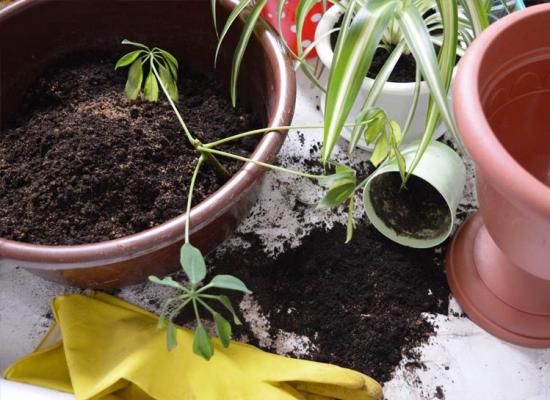
During the active growing season, transplantation is easiest to tolerate. In the spring, you can carry out not only transshipment, without violating the integrity of the earthen coma, since the plant has entered a phase of active growth and rapid recovery.
Of course, you can transfer flowers to a new container at any time of the year, but the optimal period is spring.
The most suitable time to transplant flowers, watch the video:
What are the advantages of replanting indoor plants in autumn and spring?
Spring replanting is associated with the beginning of the active growing season, so even a damaged flower has the opportunity to recover. The period of spring renewal is favorable for soil renewal; even some carelessness is allowed, since the plant at this time is strong enough to recover.
Autumn transplantation, before the immediate dormant period, is carried out mainly by transshipment. In this case, indoor flowers enter the winter dormant period already in a new container and become active in the spring without unnecessary damage.
Both options have their advantages that are worth considering when choosing one. It is recommended to focus not only on your convenience, but also on the characteristic features of the species.
Is it possible to replant indoor flowers in winter and summer?
Despite the fact that this time of year is not entirely favorable for such events, they can be held. So, in summer it is possible to transplant only after flowering has ended in mid-late June or July.
Changing the container in winter is not recommended; it is recommended only if the pot is damaged or has other problems.So, if parasites are detected, a fungal infection or an unreasonable deterioration in the condition of the flower, a change of container and substrate is necessary, regardless of the season.
Winter and summer are not the most favorable times for such a procedure. However, if necessary, it can be carried out, subject to certain rules.
Replanting indoor plants according to the lunar calendar
When planting, many gardeners are guided not only by the time of year, but also by the lunar calendar. Since changing a potty cannot do without some stress for its resident, it is still worth paying attention to the recommendations of the lunar calendar. All inhabitants of the Earth are dependent on the movement of celestial bodies and flowers are no exception. By following the recommendations indicated in the calendar, you can significantly simplify the transplantation process for green pets.
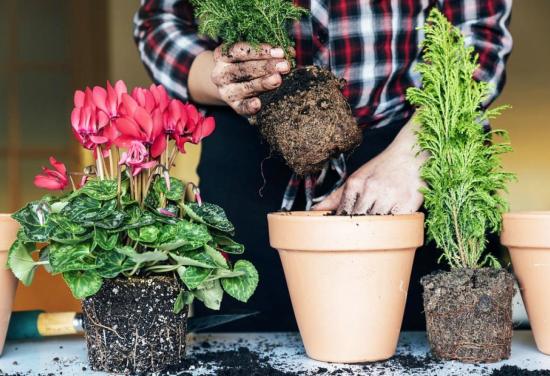
The basis of the calendar is the influence of the Moon on the movement of water on Earth. Thus, not only the seas, but also all living organisms on earth are exposed to this effect. So, depending on the phase of the moon, the movement of juices in the plant body differs.
During the so-called favorable dates for transplantation, the movement of sap is observed in the upper branches and foliage.
As a result of this phenomenon, the root system loses moisture and the amount of turgor decreases. As a result, root fragility is reduced and any activities are associated with minimal harm. In addition, after such a timely transplant, germination in the new soil occurs much faster than at any other time.
The days of the moon's growth are considered favorable; it is at this time that water moves towards the foliage. During the waning moon, the reverse process occurs and moisture moves to the root. This time is unfavorable for transplantation.
However, it is important to consider that it is not advisable to disturb a flowering plant even during a favorable period for replanting. This can cause his illness or even death.
An exception in which you can ignore the recommendations of the lunar calendar are emergency situations. So, if the container is damaged or infected with parasites, you should not wait for a favorable day. The faster the processing and transplantation is done, the better.
Taking into account the favorable and unfavorable dates indicated in the lunar calendar, you can significantly improve the condition of your home greenhouse. Taking into account the simple rules that govern all life on Earth, you can avoid a number of possible problems associated with incorrect and untimely transplantation.
What is transshipment
The safest method of changing containers is the transfer method. This method consists in removing the plant from the pot along with a lump of earth. In the process of transferring it to a new container, the earthen lump is not disturbed.
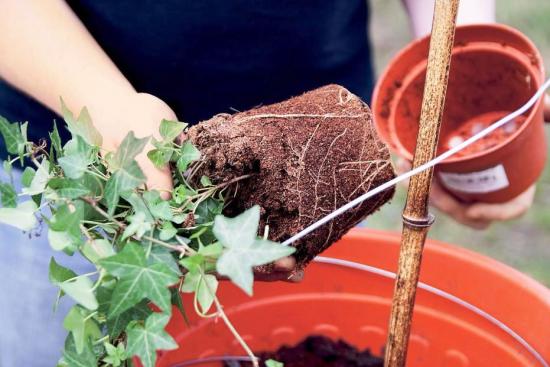
This way there is a simple transfer from one pot to another:
- After removing the earthen ball from the old container, carefully inspect it. Remove rotten and dry roots;
- The old drainage from the bottom of the coma must be removed;
- The new container must be at least 3 cm larger than the old one, and a drainage layer must be placed on the bottom;
- Place the lump in a new pot, sprinkling the gaps between it and the walls with new substrate.
A special feature of this method is the fact that it is suitable even for transplantation during the period of dormancy and budding. During transshipment, the plant receives minimal stress and the root system is not damaged.
The only disadvantage of this method is the lack of substrate renewal, so it is not advisable to use only it constantly. Unless, of course, the plant is only indicated for transshipment transplantation.
How to replant a large flower
A common problem that gardeners encounter when replanting is the size of the plant. It is quite difficult to move a huge tree into a new pot, since there is still a danger of simply breaking it.
However, it is not at all necessary to transfer it exactly to a new pot. If such an event is impossible or dangerous for the inhabitant of the home garden, it is enough to remove the top 7-8 cm of soil. Carefully loosen the remaining substrate with a wooden stick to the maximum possible depth and fill the pot with new soil. It is important to act extremely carefully so as not to damage the root.
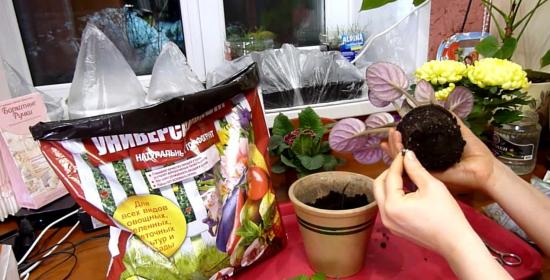
After the old and new substrates are mixed, you can add new soil to the top of the pot and water with settled water. This replacement of the top layer is sufficient.
Most common mistakes
Many novice gardeners do not consider replanting something important and often make mistakes in this. The most common ones include:
- Delay in replanting a purchased flower. By placing such an acquisition in a home greenhouse, without changing the soil and container, the gardener exposes his neighbors to possible parasite infection;
- Incorrect selection of soil - different species have their own characteristics of the substrate. Some flowers prefer soils with high acidity, while for others this is detrimental. Not taking this into account means ruining the garden;
- Lack of care for the root system - when transferring from pot to pot, it is important to renew not only the above-ground, but also the underground part, removing damaged areas;
- Late application of fertilizers.
These fairly minor mistakes may not seem worth attention, but each of them can eventually lead to the death of the flower.
Correctly transplanting a houseplant is the key to its long existence. By paying attention to a number of nuances that will not take a lot of time, you can secure your indoor greenhouse and improve its condition.


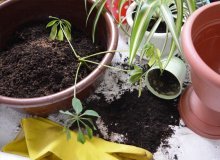
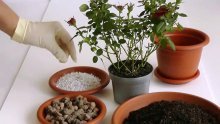

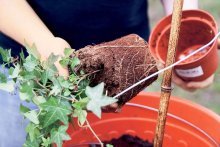


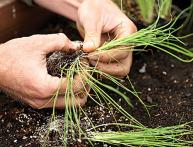

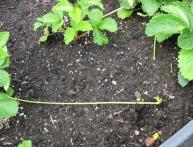

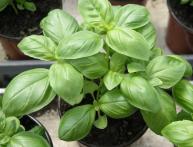


Comments
I buy the soil at the store and do not disinfect it in any way. I replant all the plants only in spring or summer, then they take root faster and do not get sick. If you do this in autumn or winter, the flower may disappear.
I took the soil on purpose, but I decided to use an old, leaky bucket as a pot. Why doesn’t anything want to grow in it at all? Already the second plant began to wither in it, I had to replant and throw away this bucket.
I replant my flowers about once a year. I use universal soil; I don’t add any additional fertilizer at first. And my main rule for replanting is that the plant cannot be replanted during the flowering period.
I try to replant flowers only in the spring. I noticed that the sun and active growth are reflected favorably and the flower is well received. It is important to use fertilizers. I usually trust the recommendations of the consultants from the flower shop where I bought this flower.